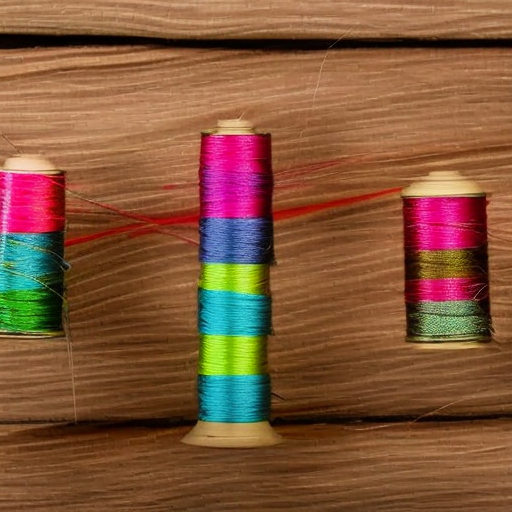

Fly tying is the art of creating imitation flies used in fly fishing. It requires precision and attention to detail to create lifelike flies that attract fish. One crucial component in fly tying is the sewing thread. While there are various types of threads available, using the right sewing thread can make a significant difference in the quality and durability of the flies.
Characteristics of an Ideal Sewing Thread
The ideal sewing thread for fly tying should possess certain characteristics to ensure optimal performance:
- Strength: It should have sufficient strength to withstand tension during tying without breaking. This is particularly important for tying small flies or when working with materials that require extra tension.
- Fine Diameter: The thread shouldn’t create bulk on the fly. A fine diameter thread allows for precise and delicate wraps without overpowering the other materials used.
- Abrasion Resistance: Flies are typically subjected to various elements such as water, rocks, and fish jaws. A thread with good abrasion resistance ensures the durability and longevity of the fly.
- Minimal Stretch: Limited stretch in the thread helps maintain tension and prevents loosening of the materials used.
- Various Colors: Having a wide selection of colors allows the fly tyer to match the thread with the specific color scheme of the fly, creating a more realistic and visually appealing end product.
Choosing the Right Thread
When choosing sewing thread for fly tying, it’s essential to consider the following factors:
- Type: Polyester and nylon threads are popular in fly tying due to their strength and durability. They come in a range of diameters suitable for different fly sizes, from ultra-fine for midges and small nymphs to thicker threads for larger streamers.
- Denier: Denier refers to the thickness of the thread. A higher denier means a thicker thread. It’s advisable to have a variety of deniers to accommodate a wide range of fly patterns.
- Brand: Trusted brands known for producing high-quality threads are a great choice. Popular brands include Veevus, Danville, Uni-Thread, and UTC.
Conclusion
Choosing the right sewing thread for fly tying can greatly enhance the quality and durability of the flies created. Considering the characteristics and factors mentioned above will help fly tyers make informed choices and produce stunning flies that entice fish and enhance their overall fishing experience.





I’ve been looking for a good quality thread to use for fly tying. Thanks for the recommendation!
Harper Johnson: I never realized how important thread was for fly tying. It has really improved my results!
This is a great product to use for fly tying! I’ve been using it for several months now and it’s been a huge help to give my flies a neat, neat and consistent weave. I highly recommend it for anyone looking for a quality thread to use for fly tying!
I recently started to try my hand at fly tying and the thread I had been using wasn’t holding up – this was a great solution! I’ve noticed huge improvements in the strength and look of my flies since switching to this thread. Highly recommend it for anyone looking for reliable thread to use for fly tying!
I never thought of using thread for fly tying but it makes so much sense! This is a great option for getting good results with fly tying!